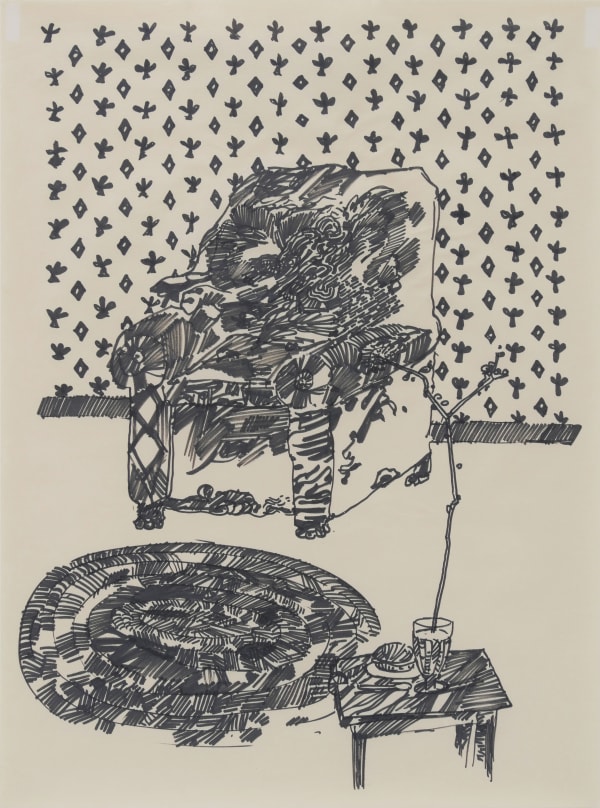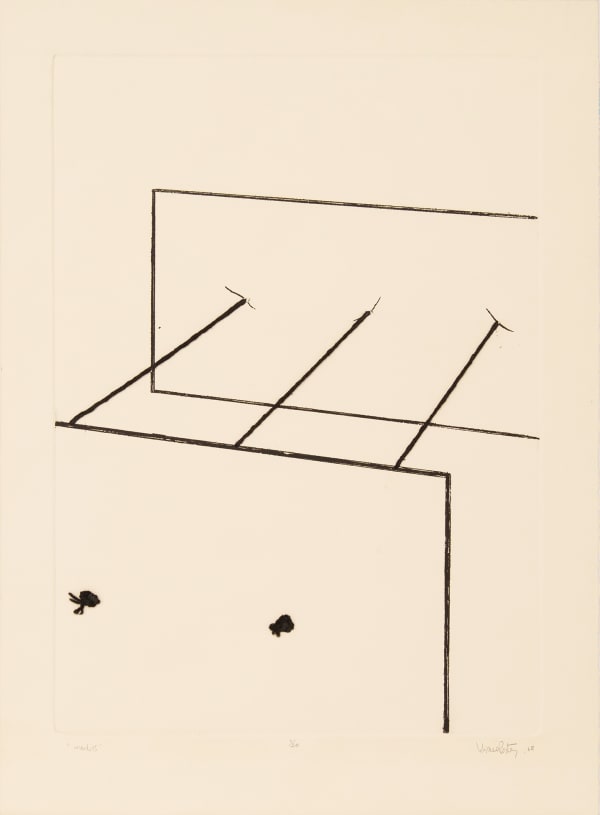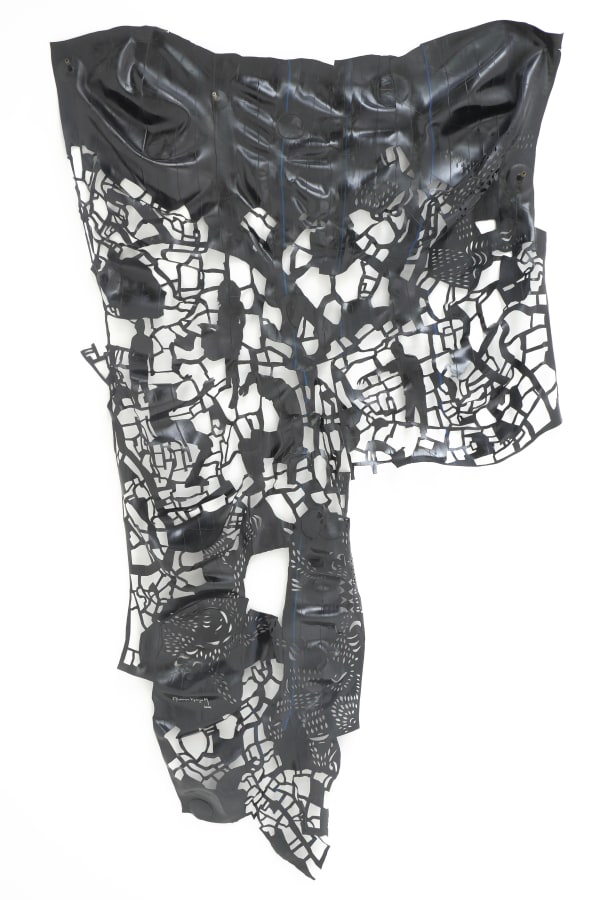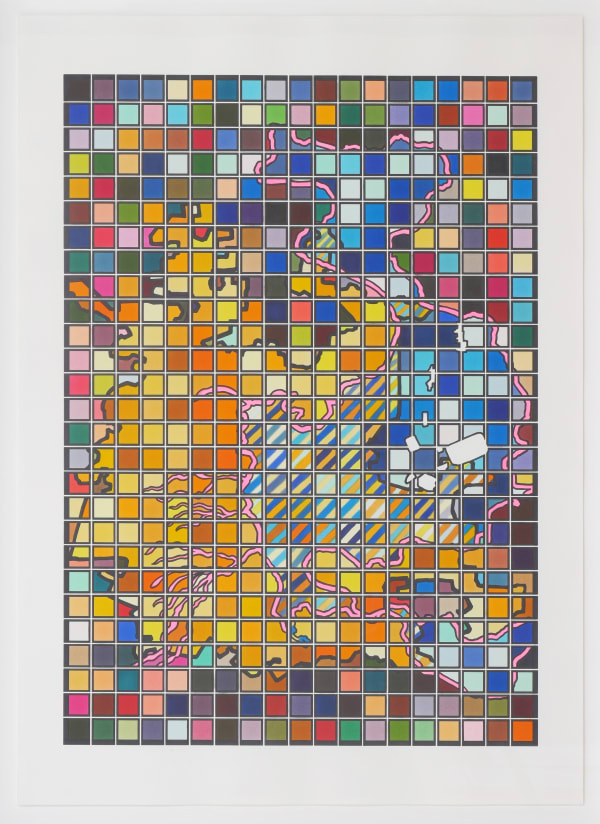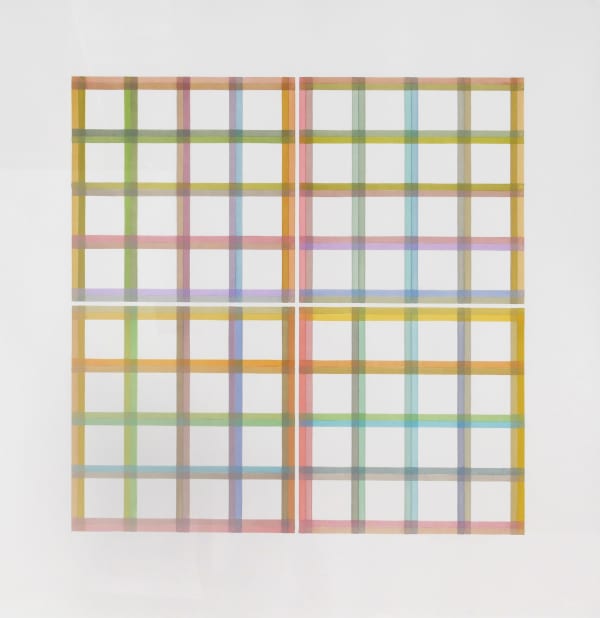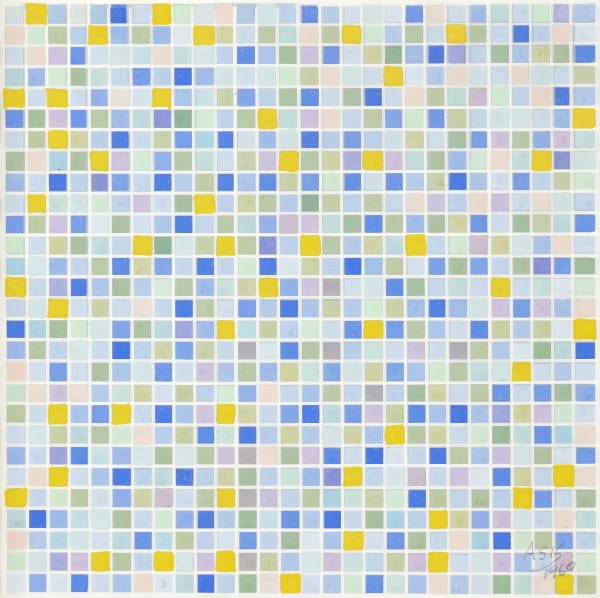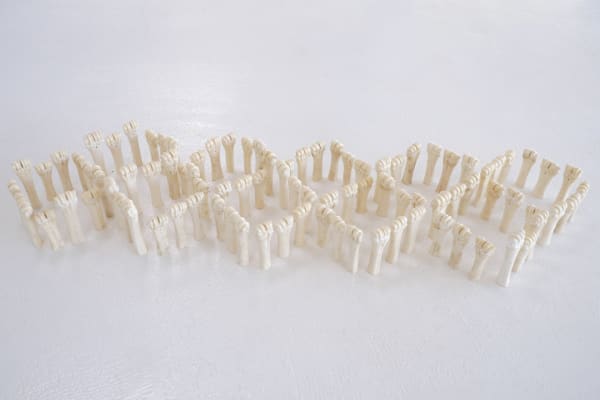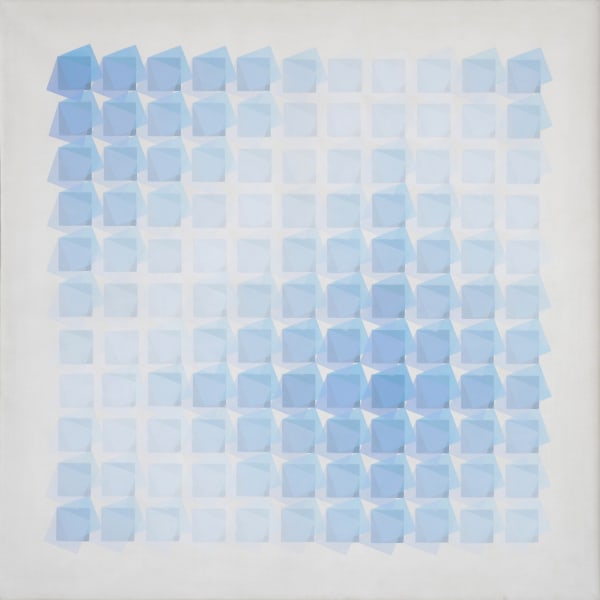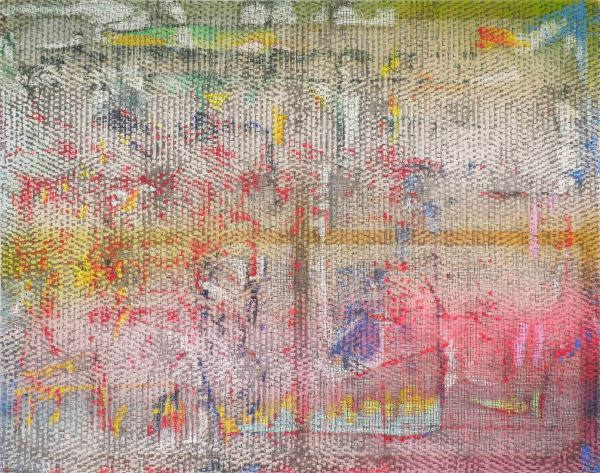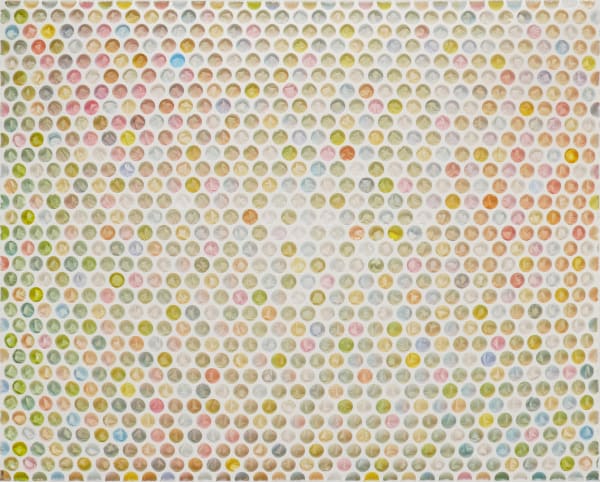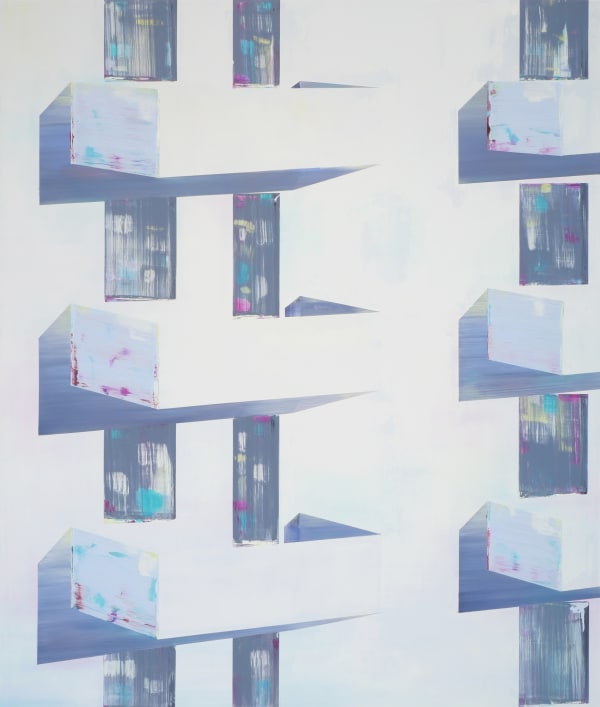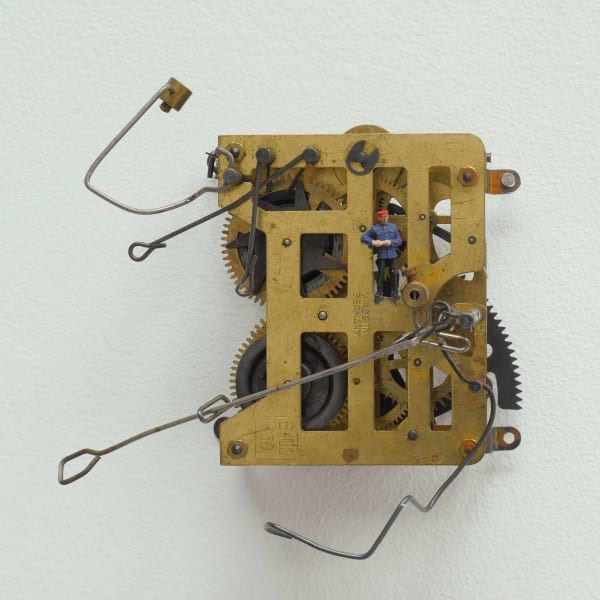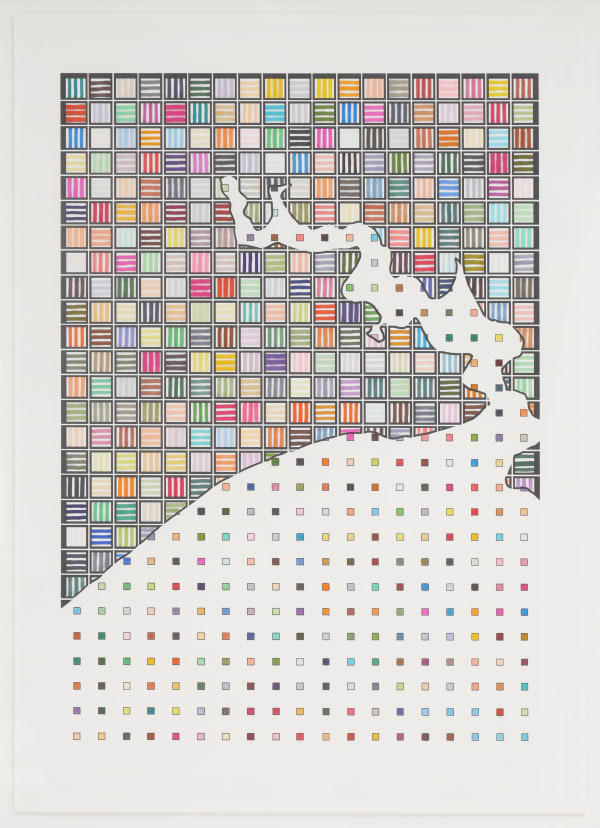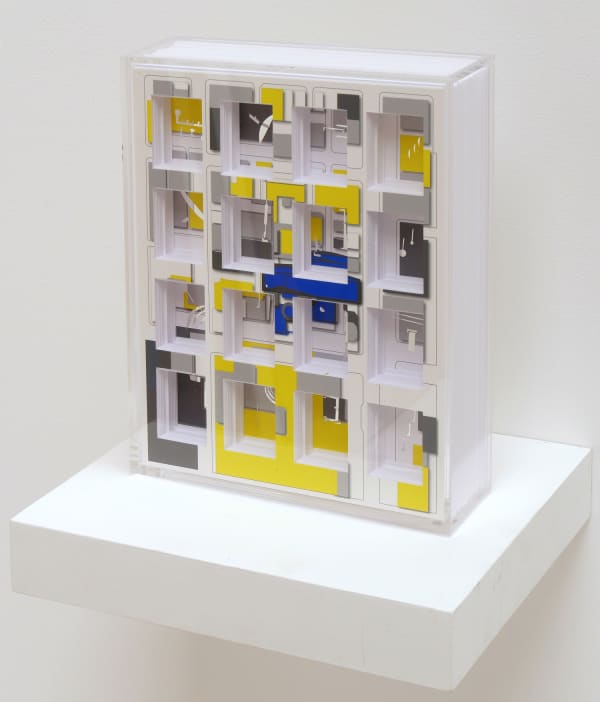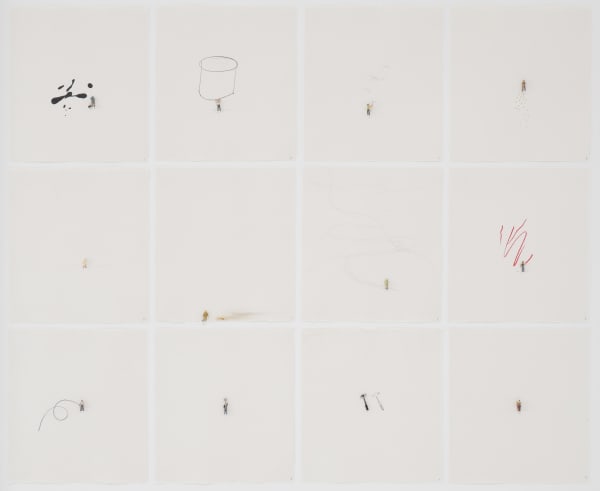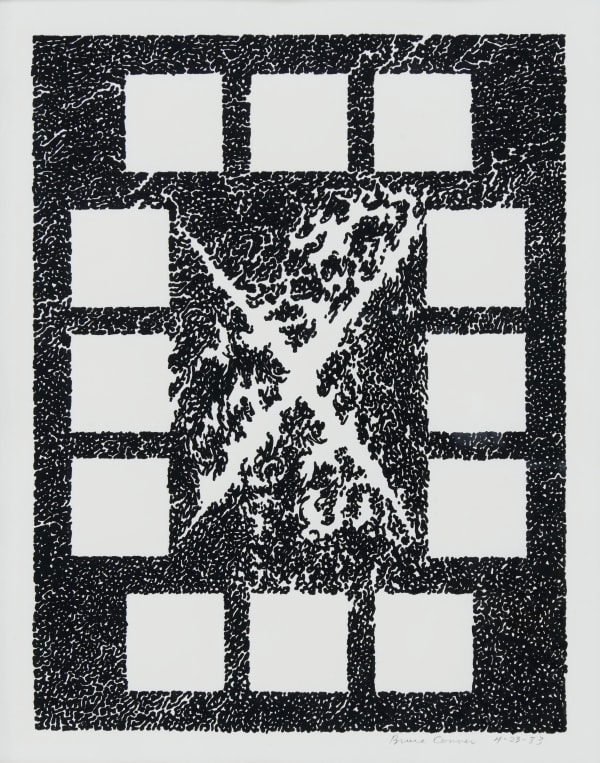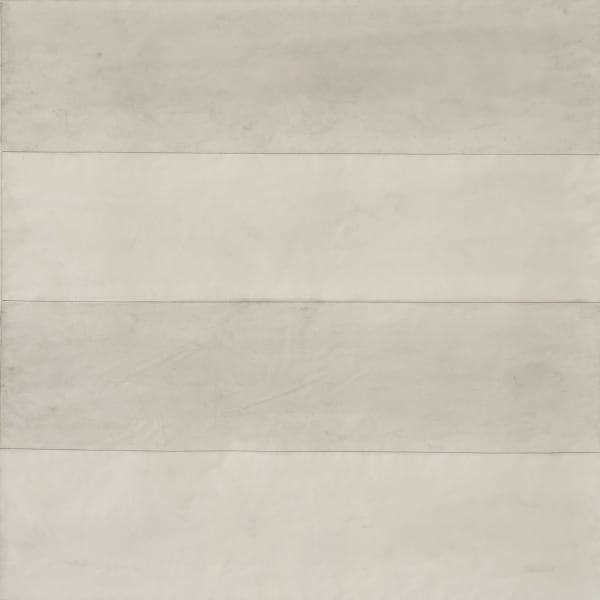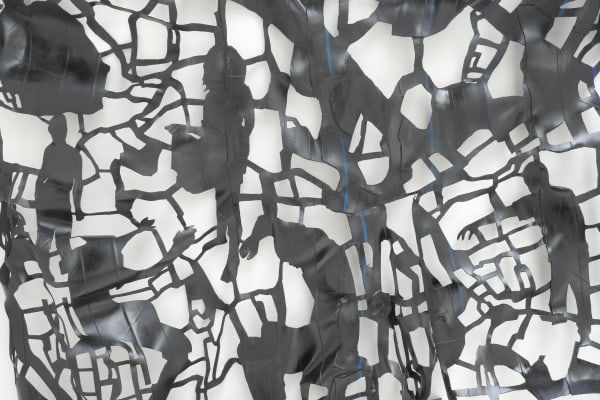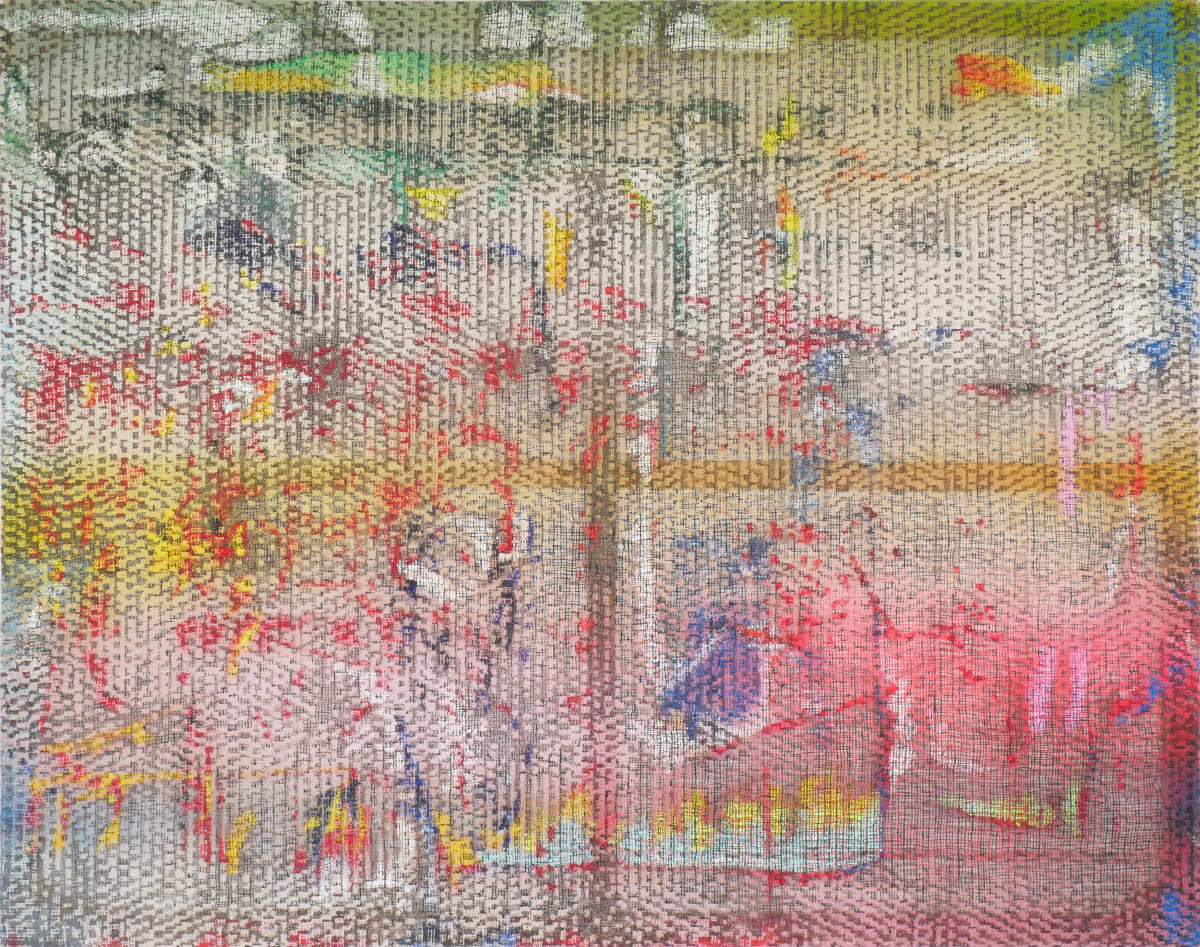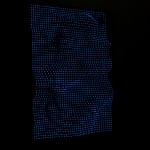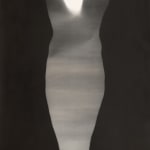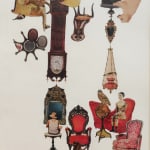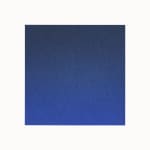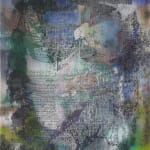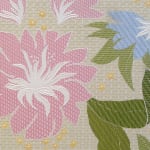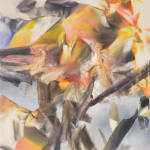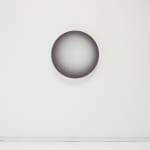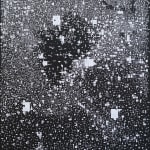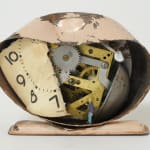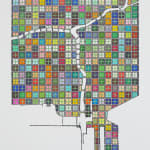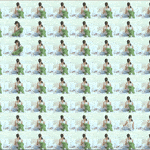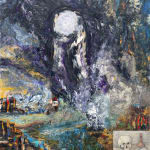OFF THE GRID: Post-Formal Conceptualism
This sprawling group exhibition traces the use of the form of the grid in contemporary art, beginning with some of its most illustrious mid-20th century proponents. From there, it examines conceptual uses of the grid from the 1970s and 80s and utilizes that history to establish a vantage point from which to explore a current resurgence in the motif among contemporary artists of wide-ranging cultural backgrounds.
The grid is omnipresent in our world: the calendar, the layout of city streets, the apps on your phone, the keyboard of your computer, the faces in your Zoom meeting, Excel spreadsheets, the tilework in your bathroom, the brick walls and factory sash windowpanes in this very gallery. Chances are, you’re wearing a textile that was woven… it might even be plaid.
The grid, as a form, existed in the warp and weft of the first loom. It was used decoratively by the Sumerians in 4000 BC, and later by the Romans and in early Islamic art. During the Enlightenment, the grid embodied rationality, and became a favored form for the organization of scientific material and cabinets of curiosities. Jefferson’s Ordinance of 1785 laid out a grid that would divide the U.S. into townships — both a tool for making sense of an unimaginably vast landscape and for training settlers in values that would support democratic institutions like public schools.
In terms of art, nothing denotes capital “M” Modernism as definitively as the grid. In its early 20th century and post-war incarnations, it stood in opposition to romantic pictorialism. A “contentless” trope — solely about pure form and color — that nevertheless represented the promise of a tidier, more egalitarian future. The grid became an optimistic metaphor for order, and a leitmotif for the hope of stability.
This is where this exhibition begins. Several artists refer to late 19th century French painters who play with the patterns found in domestic settings as signifiers for the safety of the “happy home,” while others use the device to imply anxiety around their familial experience. You’ll find examples of the grid used to create dizzying optical effects, mirroring the uncertainty of a rapidly changing world, and others who use grid-making as a meditation, a repetitive practice to empty the mind.
Of course, the form of the grid is perfectly applied to charts, lexicons or typologies. The grid defines the way we’ve organized the modern city, the way we look at digital/pixelated information, and is central to the language of mapmaking. By extension, the grid describes our deep need to find our place in the world… physically, socially and emotionally. To someone feeling dislocated or insecure, perhaps the grid generates a sense of control and well-being.
Conversely, the grid can be a tyrant. At least as interesting as the reasons artists choose to explore the regularity of the grid, are the reasons other artists subvert it. For them, the grid is a tool to expose the status quo as artifice, and the raison d’etre of their art is to poke holes in it or tear it apart completely.
-

-

-

-

-

-

-

-

-

-
 Birgit JensenSAGARMATHA, 2009acrylic on canvas78 3/4 x 66 7/8 inches
Birgit JensenSAGARMATHA, 2009acrylic on canvas78 3/4 x 66 7/8 inches
200 x 170 cm -

-

-
 Susie TaylorBlush, 2023weaving (cotton)29 x 29 in
Susie TaylorBlush, 2023weaving (cotton)29 x 29 in
73.7 x 73.7 cm -
 Lordy RodriguezMexico City and Lake Texcoco, 2022ink on paper30 x 21 1/2 in
Lordy RodriguezMexico City and Lake Texcoco, 2022ink on paper30 x 21 1/2 in
76.2 x 54.6 cm -

-

-

-

-
 Bernard LokaiLandscape Block O, 2020oil and acrylic on canvas (18)51 1/8 x 135 7/8 in
Bernard LokaiLandscape Block O, 2020oil and acrylic on canvas (18)51 1/8 x 135 7/8 in
130 x 345 cm -

-

-

-

-

-

-
 Jutta HaeckelCosmic Background Radiation 1, 2022acrylic on jute59 x 74 3/4 in (or reverse)
Jutta HaeckelCosmic Background Radiation 1, 2022acrylic on jute59 x 74 3/4 in (or reverse)
150 x 190 cm -

-

-

-

-

-

-

-

-

-

-

-

-
 Liliana PorterThe Clock Keeper, 2022broken clock and figurine5 x 4 1/2 x 2 3/4 in
Liliana PorterThe Clock Keeper, 2022broken clock and figurine5 x 4 1/2 x 2 3/4 in
12.7 x 11.4 x 7 cm -

-

-

-

-
 Marco MaggiComplete Coverage on Ellsworth Kelly, 2021cut paper, plexiglass box8 x 8 x 2 in
Marco MaggiComplete Coverage on Ellsworth Kelly, 2021cut paper, plexiglass box8 x 8 x 2 in
20.3 x 20.3 x 5.1 cm -
 Jean ConnerPOWER, 1980paper collage18 x 10 3/8 in
Jean ConnerPOWER, 1980paper collage18 x 10 3/8 in
45.7 x 26.4 cm -

-

-

-

-

-
 Liliana PorterTwelve Events, 2018collage, acrylic, colored pencil and graphite on papereach sheet 11 1/4 x 10 inches/28.6 x 25.4 cm
Liliana PorterTwelve Events, 2018collage, acrylic, colored pencil and graphite on papereach sheet 11 1/4 x 10 inches/28.6 x 25.4 cm
framed 41 x 48 5/8 inches/104.1 x 123.5 cm -

-

-
 Emil Lukasjiggling #2072, 2021plaster, paint, aluminum46 x 46 x 6 in
Emil Lukasjiggling #2072, 2021plaster, paint, aluminum46 x 46 x 6 in
116.8 x 116.8 x 15.2 cm -




